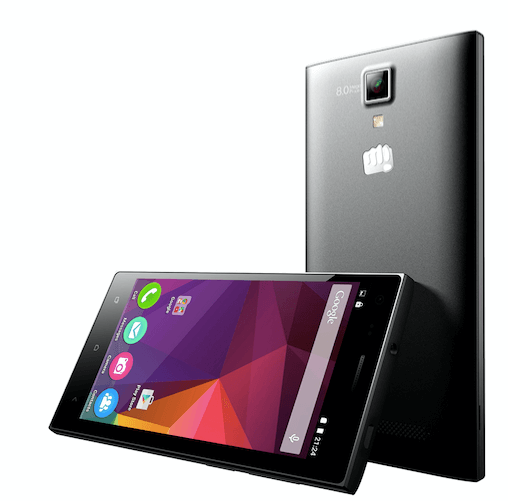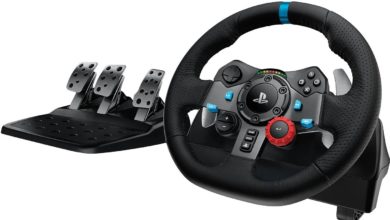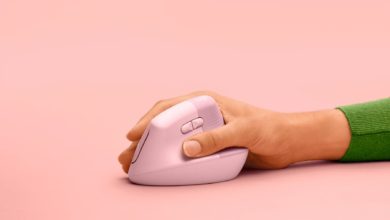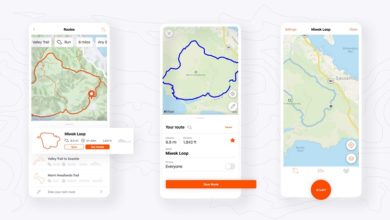 Micromax has launched another 4G smartphone in India, the Canvas XP 4G. The device has been priced at Rs. 7,499 and will be available on Snapdeal.
Micromax has launched another 4G smartphone in India, the Canvas XP 4G. The device has been priced at Rs. 7,499 and will be available on Snapdeal.
The Canavas XP 4G is a dual-SIM smartphone and features a 5-inch HD (720×1280 pixel) display. It is powered by a 1GHz quad-core processor coupled with 3 GB RAM.
The Android 5.1 Lollipop based device comes with 16 GB of internal storage that can be expanded via microSD card. The device comes with a 8-megapixel primary camera with LED flash and a 2-megapixel secondary camera.
The device is powered by a 2,000mAh non removable battery. Connectivity options on the device include 4G, 3G, WiFi, Bluetooth and FM Radio.
Commenting on the launch, Shubhajit Sen, Chief Marketing Officer, Micromax, said, “Micromax has successfully expanded the overall smartphone market and created a favourable impact in the ecommerce channel capturing over 11 percent of the exclusive online market last year. A significant part of this success is attributed to our partnership with Snapdeal, where we have grown the overall entry level smartphone market. With the launch of Canvas XP with Snapdeal, we are further bringing a very strong product to our consumers to upgrade to the latest 4G phenomena.”
Micromax Canvas XP
-
Design
1 / 10
-
Performance
1 / 10
-
Display
1 / 10
-
Battery
1 / 10
-
Call Quality
1 / 10
Micromax has launched another 4G smartphone in India, the Canvas XP 4G. The device has been priced at Rs. 7,499 and will be available on Snapdeal. The Canavas XP 4G is a dual-SIM smartphone and features a 5-inch HD (720×1280 pixel) display. It is powered by a 1GHz quad-core processor coupled with 3 GB RAM. The Android 5.1 Lollipop based device comes with 16 GB of internal storage that can be expanded via microSD card. The device comes with a 8-megapixel primary camera with LED flash and a 2-megapixel secondary camera.The device is powered by a 2,000mAh non removable battery. Connectivity options on the device include 4G, 3G, WiFi, Bluetooth and FM Radio.
Commenting on the launch, Shubhajit Sen, Chief Marketing Officer, Micromax, said, “Micromax has successfully expanded the overall smartphone market and created a favourable impact in the ecommerce channel capturing over 11 percent of the exclusive online market last year. A significant part of this success is attributed to our partnership with Snapdeal, where we have grown the overall entry level smartphone market. With the launch of Canvas XP with Snapdeal, we are further bringing a very strong product to our consumers to upgrade to the latest 4G phenomena.”
Specs
General
|
Price
|
Rs. 13,999/-
|
|
Announced
|
13 April, 2016
|
|
Status
|
Available
|
Display
|
Display Type
<strong>Display Technology => </strong> A number of display technologies and types used in mobile phones => TFT (Thin Film Transistor), IPS (In-Place Switching), OLED (Organic Light Emitting Diode), AMOLED (Active-Matrix Organic Light-Emitting Diode), Super AMOLED (an even advanced version of AMOLED), Resistive Touchscreen (Resistive touchscreens contain two layer of conductive material with a very small gap between them which acts as a resistance), Capacitive Touchsceen (Capacitive touchscreen technology consists of a layer of glass coated with a transparent conductor)
|
IPS
|
|
Size
|
5
|
|
Resolution
|
720x1280
|
|
Pixel Density
<strong>Pixel Density (PPI)</strong> is refers to the concentration of pixels on a particular display, measured in pixels per inch (ppi). Pixel density is calculated by dividing the diagonal pixel resolution of a display by its diagonal size, higher pixel density better display quality.
|
294ppi
|
Hardware
|
Chipset
<strong>Chipset</strong> is a group of integrated circuits designed to perform one or a more dedicated functions, often with real time computing constraints, Popular smartphones are equipped with more advanced embedded chipsets that can do many different tasks depending on their programming.
|
MediaTek MT6735P
|
|
CPU
<strong>CPU</strong> (Central Processing Unit) mostly known as processors, CPU processes instructions in order to carry out certain functions that make your device operate properly. Processors are often described as the brain of computers, smartphones and tablets, Smartphones and tablets rely on processors to carry out their every task, Processors are an incredibly important factor in selecting any type of computing device, including your smartphone.
|
1.3GHz Quad Core
|
|
GPU
<strong>GPU</strong> (Graphics Processing Unit) is a single-chip processor designed to rapidly manipulate and alter memory to accelerate the creation of images in a frame buffer intended for output to a display, This includes things such as lighting effects, object transformations, and 3D motion.
|
ARM Mali T720
|
|
RAM (Memory)
<strong>RAM</strong> (Random Access Memory) is a type of computer memory that can be accessed randomly, any byte of memory can be accessed without touching the preceding bytes that allows information to be stored and accessed quickly from random locations. RAM is the most common type of memory found in computer systems, smartphones, tablets and other electronic devices.
|
3GB
|
|
Internal Storage
<strong>Internal Storage</strong> is a data storage space (flash memory) mostly used in smartphones, tablets and other electronic devices where operating system, apps, music, photos, videos, files and other user data Is stored.
|
32GB
|
|
Card Slot
<strong>Memory Card Slot</strong> is a special slot for inserting a memory card. Memory cards allow you to expand the phone's built-in memory, A memory card (sometimes called a flash memory card or a storage card) is a small storage medium used to store data such as text, pictures, audio, and video, for use on small, portable or remote computing devices such as mobile phones, mp3 players, digital cameras.
|
Yes
|
|
Sensors
<strong>Sensors</strong> are electronic components that detects and responds to some type of input from the physical environment. The specific input could be light, heat, motion, moisture, pressure and location, The output is generally a signal that is converted to use in computing systems, a location sensor, such as a GPS receiver is able to detect current location of your electronic device.
|
Gravity, proximity, light sensors
|
Battery
|
Battery Type
<strong>Battery Type => </strong> Cell phones run on various kinds of batteries depending on the manufacturer, phone size or shape and features. There are basically four types of cell phone batteries => Lithium Polymer, Lithium Ion, Nickel Metal Hydride and Nickel Cadmium.
|
Li-Ion (Lithium Ion)
|
|
Capacity
<strong>Battery Capacity</strong> is a measure (typically in Amp-hr) of the charge stored by the battery, and is determined by the mass of active material contained in the battery. The battery capacity represents the maximum amount of energy that can be extracted from the battery under certain conditions.
|
2000mAh
|
|
Standby
<strong>Standby Time</strong> is the total amount of time that you can leave your is fully charged, turned on and ready to send and receive calls or data transmissions before completely discharging the battery.
|
182 hours
|
|
Talk Time
<strong>Talk Time</strong> is the longest time that a single battery charge will last when you are constantly talking on the phone under perfect conditions, Ambient temperature and highly dependent on the cellular network environment such as the distance to the closest cell network tower.
|
6.5 hours
|
|
Fast Charging
|
No
|
|
Wireless Charging
<strong>Wireless Charging</strong> (Inductive Charging) uses an electromagnetic field to transfer energy between two objects. This is usually done with a charging station. Energy is sent through an inductive coupling to an electrical device, which can then use that energy to charge batteries or run the device.
|
No
|
Camera
|
Primary
<strong>Camera</strong> is able to capture photographs and usually videos, The most important characteristics of a camera are the resolution (measured in megapixels), lens focus type (fixed or automatic), higher megapixel cameras are known to capture higher quality photos, but not always a good measurement of the photos quality.
|
8mp
|
|
Secondary
|
2mp
|
|
Image
|
2448 * 3264
|
|
Video
|
1080p
|
|
Flash
<strong>Flash Light => </strong> There is commonly two types of flash lights are used in camera mobile phones, LED Flash (LED flash offers lower power consumption with drive circuitry that takes up very little room, LEDs can be strobed faster than any other light source), Xenon Flash (xenon flash produces an extremely intense full-spectrum white light for a very short duration)
|
Yes
|
Design
|
Type
<strong>Design Type</strong> called form factor refers to a mobile phone's size, shape, and style as well as the layout and position of major components of phone. There are three major form factors seen in mobile phones => bar phones, folding phones and sliding phones.
|
Bar
|
|
Colors
|
Black
|
Network
|
SIM
<strong>SIM</strong> (Subscriber Identity Module) is a small card that contains mobile network subscriber's account information. This allows the phone using the card to attach to a mobile network. The SIM card is most commonly associated with GSM and UMTS mobile networks. Moving a SIM card from one phone to another allows a subscriber to switch mobile phones without having to contact their mobile network carrier. SIM cards can also be used by a phone to store limited amounts of data, such as phone numbers and text messages.
|
Nano SIM
|
|
Dual SIM
|
Yes (Micro + Nano)
|
|
2G Network
|
GSM: 900/1800MHz , WCDMA: 2100/900MHz
|
|
3G Network
|
GSM: 900/1800MHz , WCDMA: 2100/900MHz
|
|
4G Network
|
LTE TDD 2300MHz (Band 40), FDD: 1800(Band 3)MHz, 850(Band 5)
|
Software
|
Operating System
<strong>OS => </strong> Every computer system run on a base software called Operating System (OS). Operating System controls all basic operations of the computer (such as smartphone, PDAs, tablet computers and other handheld devices). The Operating System allows the user to install and run third party applications (apps), apps are used to add new functionality to the device.
|
Android 5.1 Lollipop
|
Connectivity
|
Bluetooth
<strong>Bluetooth</strong> is a wireless communications technology for exchanging data between mobile phones, headsets, computers and other network devices over short distances without wires, Bluetooth technology was primarily designed to support simple wireless networking of personal consumer devices.
|
4.1
|
|
Infrared
<strong>Infrared</strong> connectivity is an old wireless technology used to connect two electronic devices. It uses a beam of infrared light to transmit information and so requires direct line of sight and operates only at close range.
|
|
|
Wi-fi
<strong>Wi-Fi</strong> is a popular wireless networking technology using radio waves to provide high-speed network connections that allows devices to communicate without cords or cables, Wi-Fi is increasingly becoming the preferred mode of internet connectivity all over the world.
|
802.11b/g/n
|
|
USB
|
v2
|
|
GPS
<strong>GPS</strong> The Global Positioning System is a satellite-based radio navigation system, GPS permits users to determine their position, velocity and the time 24 hours a day, in all weather, anywhere in the world, In order to locate your position, your device or GPS receiver must have a clear view of the sky.
|
Yes
|
|
NFC
<strong>NFC</strong> (Near field communication) is a set of standards for smartphones and similar devices to establish peer-to-peer radio communications with each other by touching them together or bringing them into proximity, usually no more than a few inches.
|
|

 Micromax has launched another 4G smartphone in India, the Canvas XP 4G. The device has been priced at Rs. 7,499 and will be available on Snapdeal.
Micromax has launched another 4G smartphone in India, the Canvas XP 4G. The device has been priced at Rs. 7,499 and will be available on Snapdeal.




